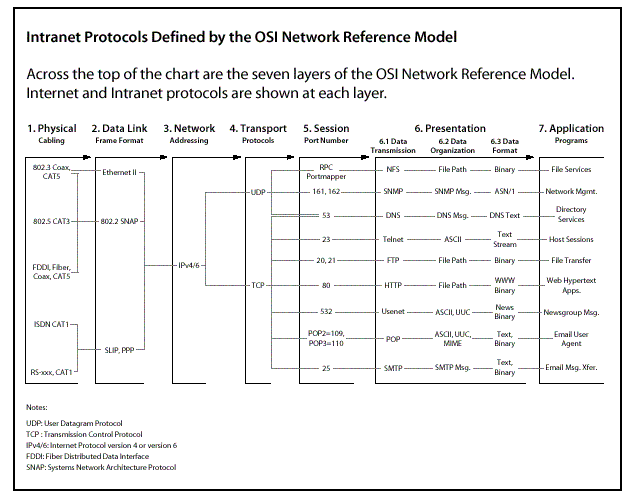(pronounced “oh-ess-EYE”) (n.) A standard and a model for data communications. OSI has the following seven layers (see table):
- Physical layer (hardware, medium of connection). Specifies electrical and mechanical connections and the media access control (MAC). The physical layer is used by the data link layer directly above it. Two common physical layer protocols are CSMA/CD and token ring.
- Data link layer (linking protocols). Splits data into frames, transmits the frames over the physical layer, and receives acknowledgment frames. The data link layer performs error checking and retransmits frames received incorrectly. It provides a channel to the network layer directly above it. The data link layer is divided into the upper sublayer, logical link control (LLC), and the lower sublayer, media access control (MAC).
- Network layer (type of network). The third lowest layer, which determines routing of data packets from sender to receiver via the data link layer. The network layer is used by the transport layer directly above it. The most common network layer protocol is Internet Protocol (IP).
- Transport layer (protocol for transfer). Determines how the network layer is used to provide point-to-point connections between hosts. It establishes and releases connections between hosts and is also referred to as the host-to-host layer. The transport layer is used by the session layer directly above it. The most common transport layer protocol is Transmission Control Protocol (TCP).
- Session layer (means of communication). Uses the transport layer to establish a connection between processes on different hosts. It handles the creation and security of each session. The session layer is used by the presentation layer directly above it.
- Presentation layer (adaptation of connections). Performs functions such as text compression and format conversion to facilitate communication between hosts. The presentation layer allows incompatible processes in the application layer above it to communicate using the session layer below it.
- Application layer (specific implementation of defined facilities). Handles resource allocation and problem partitioning. The application layer delivers the user interface. The presentation layer below it provides this layer with a local representation of data independent of the format used on the network.

